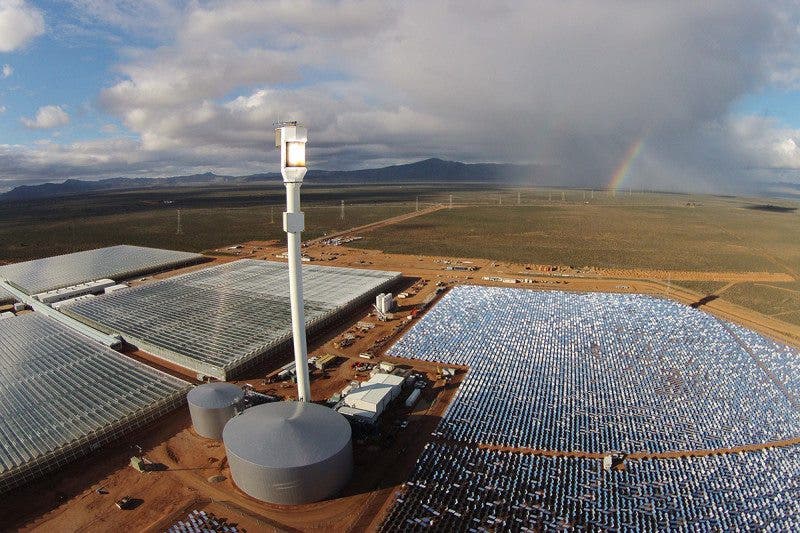A new farm will produce 17,000 tonnes of tomatoes every year, in the Australian desert, using only water from the ocean and sunlight.

If you want to build a farm, you first need two things: good soil and good water. The Australian desert has neither – but it does have a lot of sun and it’s close to the ocean. An international team of scientists wanted to take advantage of this scenario and spent the last six years designing a system which would thrive under these conditions.
It all started with a small greenhouse in 2010. Then in 2014, they started building the full-scale farm and now the whole thing’s up and running. They pipe draws seawater from two kilometers away without using any fossil fuels, to a 20-hectare site in the arid Port Augusta region. There, a solar-powered desalination plant removes the salt, creating enough freshwater to irrigate the 180,000 tomato plants inside the greenhouse. The farm already has contracts with supermarkets in Australia to sell tomatoes.
As if not having water and soil wasn’t enough, the climate is also unfavorable for tomatoes. The summer is too hot and the winter is too cold for the plants to thrive. Yet with technology and careful planning, this can also be overcome. During the summer, seawater-soaked cardboard keeps the greenhouse cool and during the winter, solar energy heats it up. There is also no need for any pesticides or soil, as the plants grow in coconut husks instead of soil. Seawater cleans the air and kills off unwanted germs and pests.
All of this is powered by 23,000 mirrors reflecting sunlight to a 115-metre high receiver tower. The system produces 39 megawatts of energy on a good day, more than enough for the farm.
“These closed production systems are very clever,” says Robert Park at the University of Sydney, Australia. “I believe that systems using renewable energy sources will become better and better and increase in the future, contributing even more of some of our foods.”
Without a doubt, this is an innovative system, but is it truly needed? Paul Kristiansen at the University of New England, Australia, questions this need.
“It’s a bit like crushing a garlic clove with a sledgehammer,” he says. “We don’t have problems growing tomatoes in Australia.”
But he does add that in the future, under the huge stress created by climate change, farms like this might become extremely useful in some parts of the world. “Then it will be good to have back-up plans,” he concludes.






